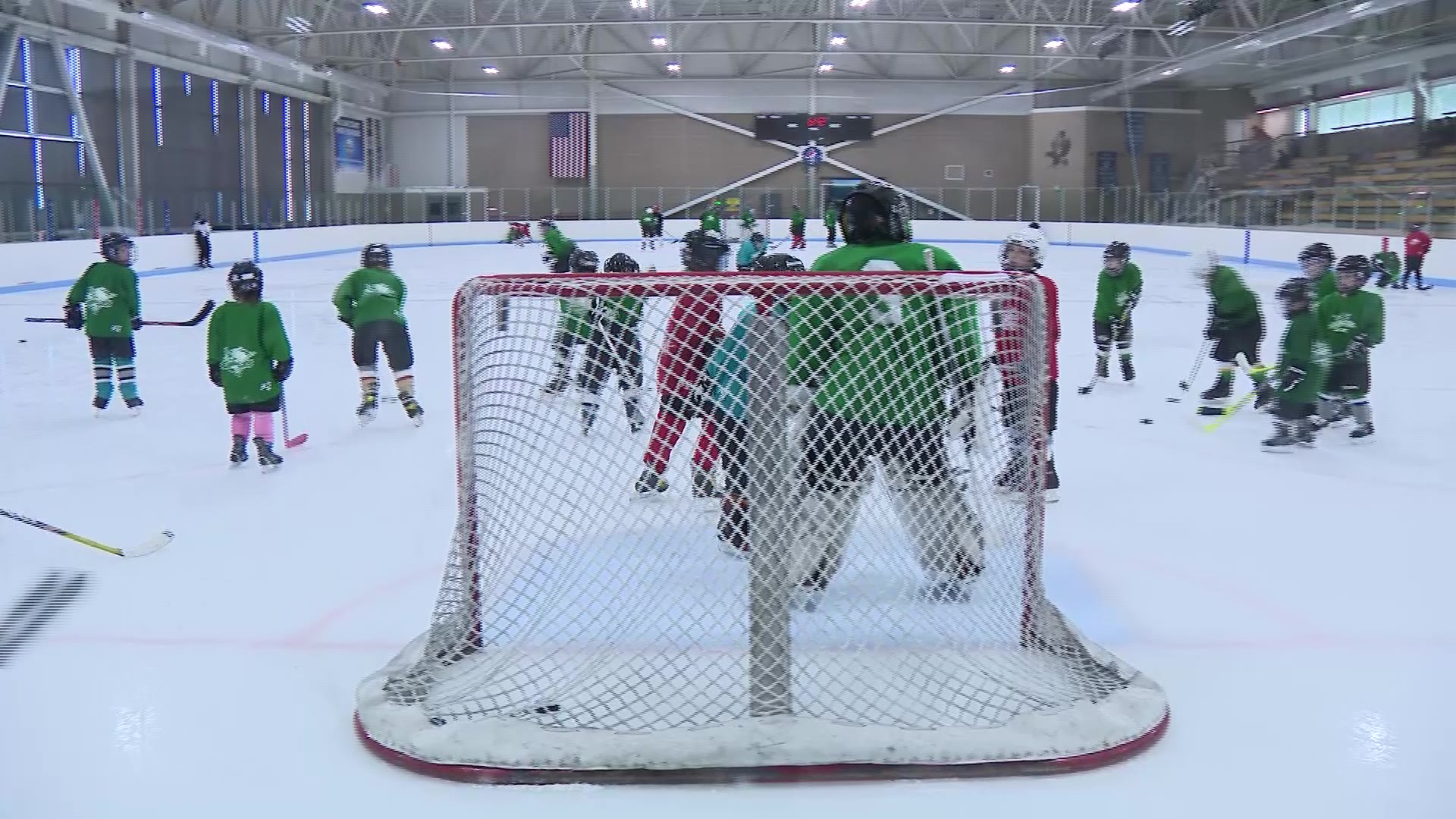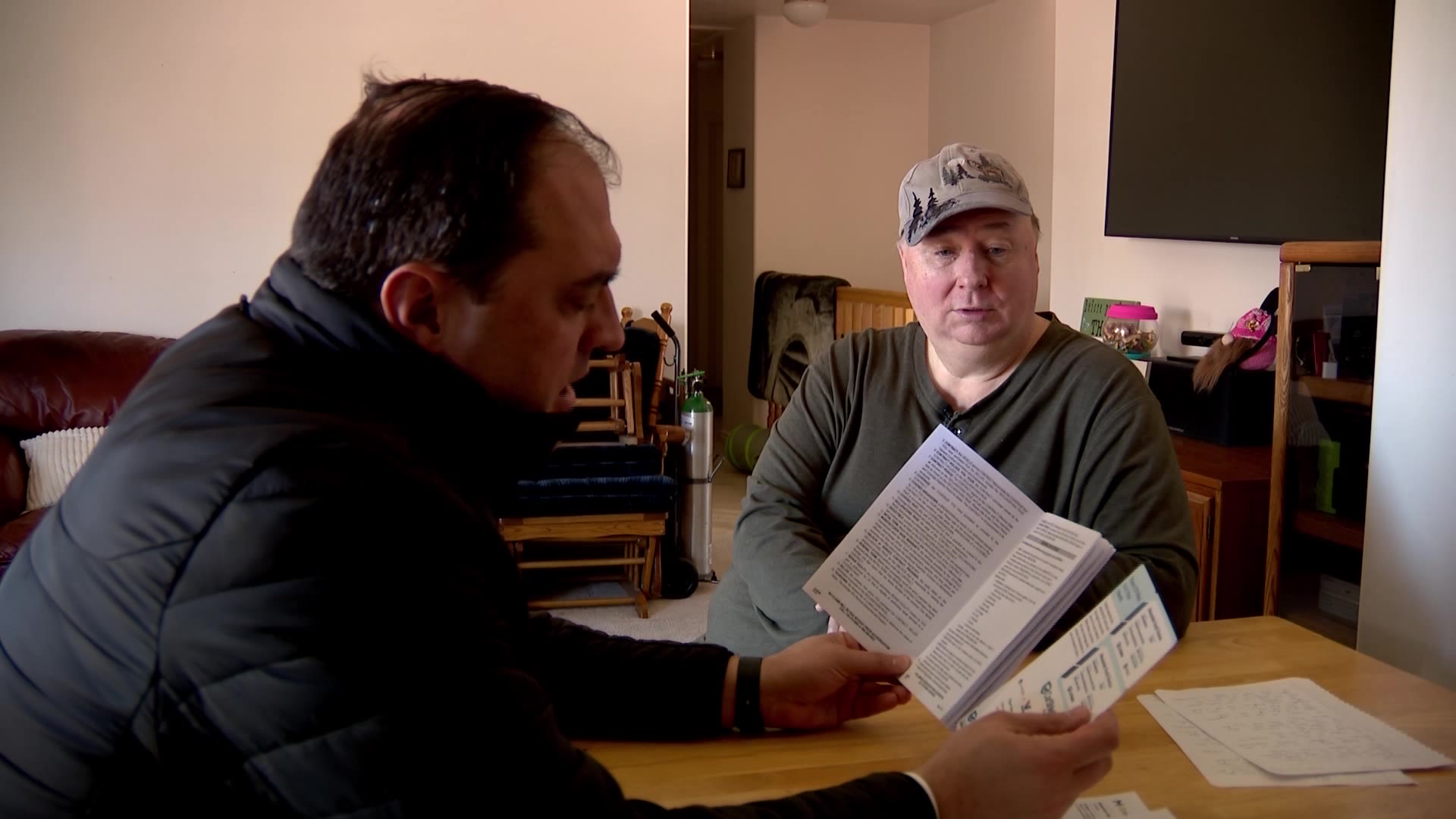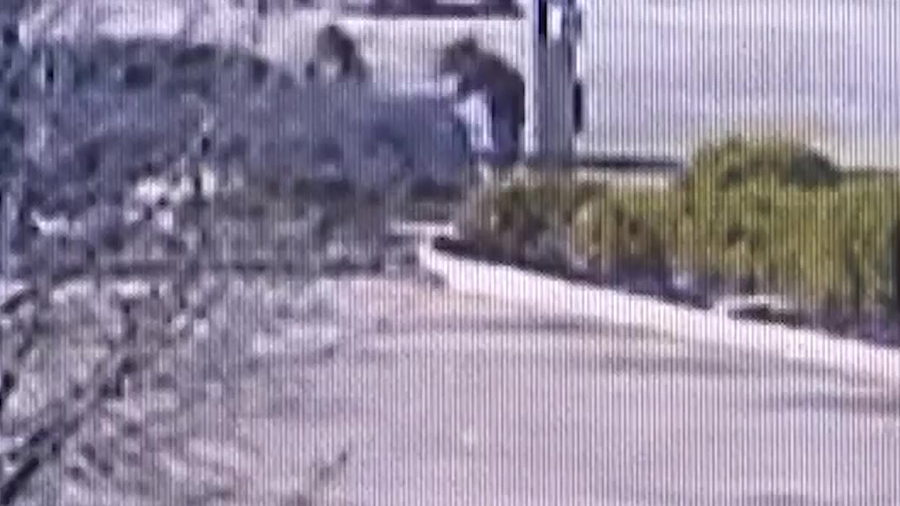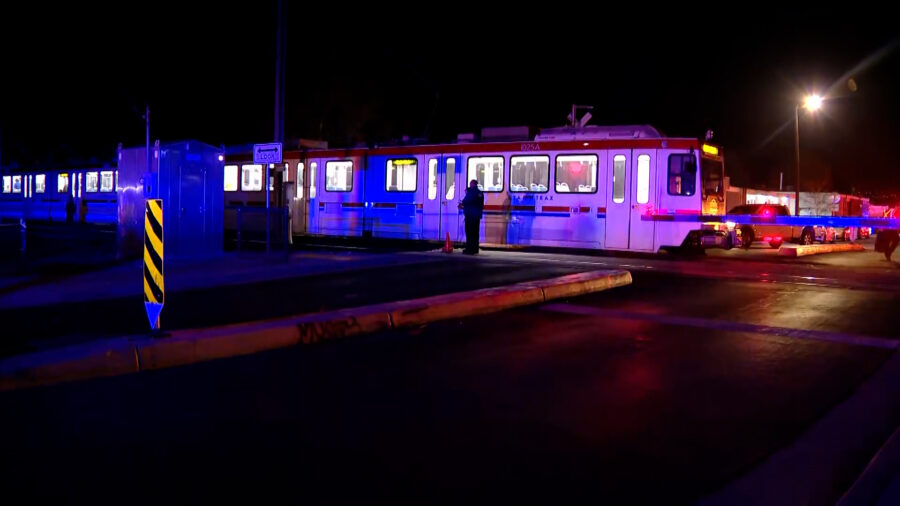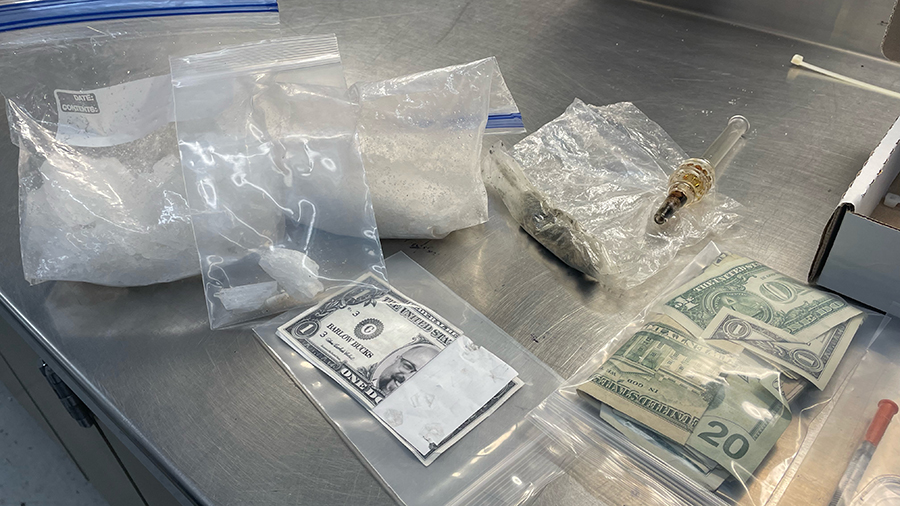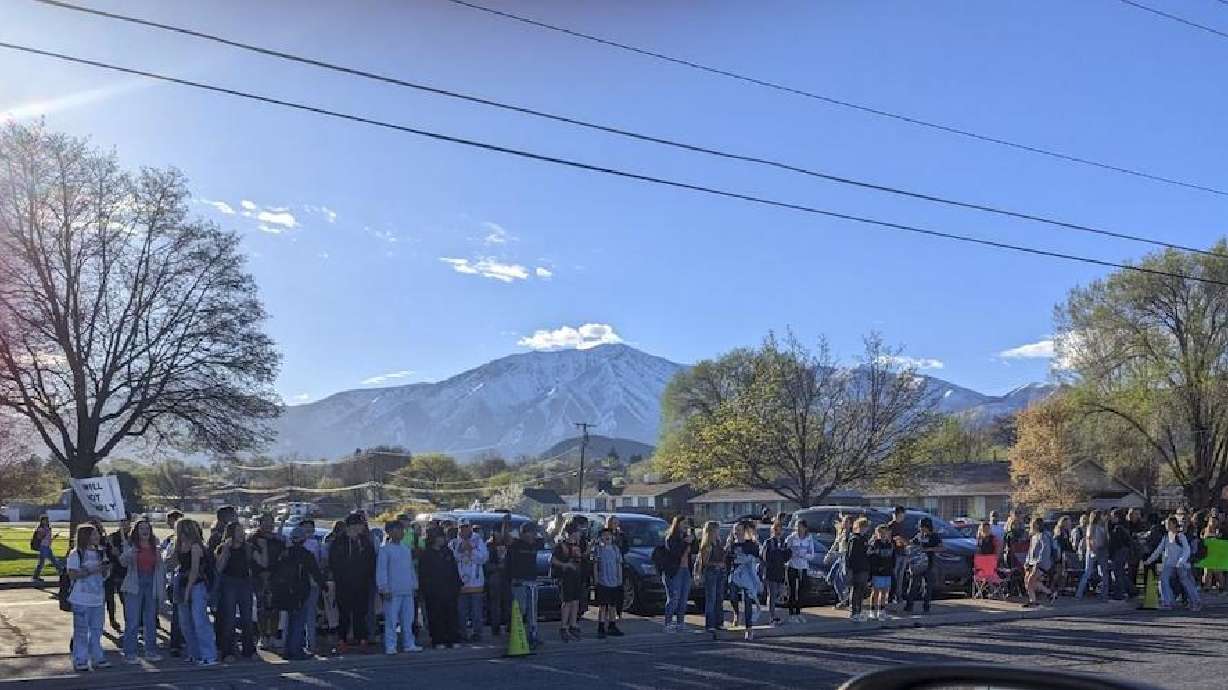Gov. Cox dives deep into Utah’s water challenges, future and shrinking GSL
Jul 20, 2022, 8:20 PM | Updated: Jul 21, 2022, 1:17 pm
Utah Gov. Spencer Cox sat down with KSL TV’s Dan Spindle to talk about Utah’s water wasting, the state’s usage and future, including the current prolonged drought and the shrinking Great Salt Lake.
TRANSCRIPT
DAND SPINDLE, KSL-TV: Utah of late, I’ve noticed, has been a punching bag. national, international, wherever you look, we’ve been singled out as seemingly the biggest water wasters ever. Is that a fair designation? And have you been watching this national, international media hyper focused on the Great Salt Lake, rightly so. Is it a fair designation to say you tell what’s going on with you guys, you guys just wastewater out there?
GOV. SPENCER COX: Well, I don’t think it’s a fair designation. But I think it is a fair criticism that we haven’t been as effective as we should have been in the past, when it comes to conserving water and, and specifically the Great Salt Lake. So I think we should be open to criticism and that means we can do better.
We’ve we’ve been victims a little bit of our own success historically, in that the people that came before us, were really, really good at storing water. And so we have this incredible reservoir system, we actually had an abundance of water, we had more water than we needed for for 175 years — and since since those first pioneers came.
So that’s led us to this point where I think we got a little lackadaisical. Why conserve when you don’t have to? We have these reservoirs full of water, we’re doing just fine. Why put limits on the amount of water that people can use? And you couple that now with being the fastest growing state in the country, and we’re in this 20-year drought, and that’s a combination that now makes it so we don’t have enough water.
So we’re playing catch up a little bit to some of the surrounding states who didn’t have those water storage, reservoirs light like we do here.
SPINDLE: As far as the year of water, I talked to Canada’s (not clear) about the the year of water designated by the legislature, passing bills, passing these different statutes that should try to rein in a lot of the the excesses in the use of water, talking about the secondary metering.
I know we have metered water where I live. And because of these conversations, I’ve been more aware of what’s going on in our own water use. That is in effect by 2030. So it’s this it’s this ripple effect utilities are getting in line, the water provider is getting in line. Do you think a lot of these measures are enough to respond with urgency as far as the year-over-year gains that we hope to see when it looks like there are dire circumstances right at the right at our doorstep?
COX: Sure. Yeah, it’s a fair question. I don’t think there are enough, I think that there’s more that we have to do. And so you’re going to see several bills this year; we’re working on those right now. We’re in discussions about what those will look like how we can get more funding, how we can move up some of the some of the projects that we have slated to do.
What we’re seeing out there is that this is a human change that has to happen — It’s a paradigm shift — Not just with lawmakers, although we needed to make that shift with lawmakers as well. And that’s hard too.
And I’m so grateful for the lawmakers that I look, they did things this last year that I thought it would take us five years to do. So we’re actually very far ahead of what we kind of laid out last year as we were projecting into the future. But but it’s a paradigm shift for everyone that lives here. And we are seeing that happen in real time.
Last year was the best year we’ve ever had for conservation and we saw some new numbers for for Salt Lake County just this just yesterday, that showed that they’re well ahead of last year when it comes to conservation. So people are getting the point they’re they’re starting to understand. And they’re making those conscious decisions to what to change the way that they they water their lawns to change how they how they, they use that water in in more productive ways.
Getting 3 million people to change that paradigm is is tough, but we’re getting there. And so I’m optimistic about where we’re headed. And I’m really excited to see what happens when this new funding that just kicked in in July 1 As we start to deploy some of those, those those technologies and those those opportunities.
SPINDLE: Let me ask you about the sources that feed the Great Salt Lake. Is there a benchmark for you as governor that you will look at and say this is where we’re making progress visually, obviously, the optics of it, we keep seeing historic low, followed by another historic low, another historic low, the reservoirs are low, for the most part almost uniform across the state.
At what point do we see this turnaround or is there a timeline? I know as a governor hesitate to say, well, by this time, we hope to see this much filled up.
What can we expect if these actual practices take hold and there is a shift? I know you can’t predict the weather. Yeah, climate change is a part of that too. What would you like to see six months, one year, five years? I mean, how can we gauge properly if we are successful in these measures?
COX: Well, you’re right it’s it’s tough to gauge because so much of this is dependent on Mother Nature. Right? We have one big snowstorm, one good year, and suddenly we start to see those lake levels come up. But we’re watching, we’re trying to see the amount above kind of average that we’re able to get into the lake and where those sources are coming from.
So we’re, we mentioned, already, we changed a law for the first time in our state’s history, you know, 175 years since those first pioneers came in here, this use-it-or-lose-it mechanism. And we are working with several partners, some of who are going to donate, some or who are going to lease their water rights to the state to get that stream flow directly into it. So we’re looking at streamflow.
Are we, are we increasing that? Or are we acquiring water rights, that we can then get to the Great Salt Lake. So that’s one measurement that I think we can all just take and look at and study and see what kind of a difference that is making.
It’s very much a math equation. Our scientists know, the the dimensions of the lake bed, they know how much water is in there, they know what it takes the how many square acre feet to when to get one foot of elevation increase in the lake. And so those are all things that we’re looking at and trying to look at the long-term forecast and what does that mean. But for us, it’s about change from where we are now that that’s what we’re going to be measuring.
How many how many new water rights do we have? What, how much water? Does that translate into? What does that mean to the elevation of the lake? And what does that mean, over the long term?
SPINDLE: Piping from the ocean? Actually, a consideration at least is something to look at. I know it’s something that, again, Candice had mentioned that lawmakers are interested in at least studying.
COX: Sure. I will admit at the top, I’m very dubious. However, I think we owe it to everyone to look at every possibility out there. You know, what, what can we do? Let’s let’s think outside the box. Let’s let’s see what that what that means. What would that cause? What does that look at? Again, I think it’s it’s more of a, a kind of a long-shot scenario. I think let’s do all the other things that we’re working on now that we know will make a difference. And and we’ll continue to look at that one.
SPINDLE: As far as, again, the mindset I know a lot of our viewers they write in and this is the constant question: We’re 9% 10% If you want to even bump it up to 15% of the total water usage in the state. Agriculture is anywhere from 70 to 90% of the state. When it’s more agriculture by X amount versus the guy watering his lawn, and he’s gonna say, OK, I get it, I water my lawn less I let it go brown. Even if we all did that, if we all shut off all the water to all of our lawns, that’s not going to fix the problem. That’s that’s what we hear all the time.
When you have agriculture versus residential, and folks who are watering their lawns, where’s the balance? And what is the agricultural responsibility? When it comes to things like maybe changing out not growing hay here? And that seems to be the the black-listed item right now is hey, we’re growing hay in Utah. Why are we growing it in the in the desert? We got to get rid of it? Is there a balance between agriculture and residential that will tip the scales a little bit more towards the larger water users in our state?
COX: Yeah, well, there is a balance. And there’s no question that agriculture has to play a huge role in this and agriculture knows that. We work with those associations all the time. We do farming, you know, I’m a farmer myself, we know how important that is. And when we’re in a drought situation, nobody, nobody loses more water than agriculture.
We had a 75% reduction last year, I don’t know anybody that took a 75% reduction on their lawns or 75% reduction in their drinking water, you know, 75% reduction in the in their water usage at their home. So agriculture is always the first to cut. And and that’s really important. There’s a lot of misinformation unfortunately, out there about agriculture.
There’s this idea that we grow alfalfa here and we sell it to China. That’s a very, very small percentage of the agriculture production here in this state. In fact, many experts have said that that alfalfa is a great crop to grow in a place like this, because it can go dormant. And you only have to plant it once and it lasts for several years, five to seven years. So it can take up less water over time when you are in a drought scenario. You can cut it back without losing the entire crop and it will still be there next year. So there are some benefits to that.
I would also add that agriculture is the great preserver when it comes to land what what’s happening so often is we’re losing our farmland in record numbers. And we’re converting that to houses for people. And so agriculture has been preserving that water when they do that those watersheds then go to that development where they can now use that water for people. So look we’ve been losing farmland and not improving our water situation. So the farmers out there are a little dubious of that chart, you also have to understand the way water flows in this state.
And and every drainage is very different. You know, for example, many of the farms around where I am, none of that water goes to anything else, it doesn’t go to drinking water, they’re in a completely separate system. Now they can be converted drinking water at some point, which is important and question…
SPINDLE: Right that would be the question. Some would say can we can we reroute the agricultural water which which would take an effort to do it, it’s not simply just tapping in and here it is.
COX: Exactly. And you could you could also eliminate 75% of the farms in the state and none of that water goes to the Great Salt Lake, right. None of that has anything to do with the with the Salt Lake Valley.
The problem in the Salt Lake Valley isn’t farming or agriculture, right? It’s the number of people that we have that are moving here. So it’s it’s different.
Every every water district is very different in that makeup. But But agriculture has to do more. And what we know is there is technology out there that will allow agriculture to use much less water. And that’s what we’re trying to promote. And we’re doing a very good job of that; we just got an additional $70 million from the legislature that will go to agriculture optimization, to help them use much less water.
But I have to remind people all of the time, that food is just as important as water, and you can’t get food without water. So you can’t take water completely away from agriculture.
We learned, one of the things we learned during this pandemic, is that we need to be able to grow some of our own food here in this state, it’s really important, as supply chains broke down to make sure that we’re doing that.
So finding that balance, making sure that agriculture is cutting back that they’re being good stewards of that water. And that they’re able to get more of that water into development says as more and more people move here, we’ll continue to work on that balance.
SPINDLE: We talked to a farmer down in Emery County about you might have seen the story of the hydroponic grow growth they were doing which was which is pretty incredible, because it was augmenting simply mixing in with the the current feed. So it didn’t eliminate the need for him to you know, put his cows out to pasture or to have these different lands. But it saved him a lot of money in the long run. It’s a lot, it’s a lot of investment upfront. But but some
COX: Some of those technologies use I mean, like 5% of the water that they would use to grow that that same amount. So so I’m very optimistic about technology playing…look through throughout the course of history, anytime we’ve had we’ve had major issues, environmental or otherwise, technology has has a way of solving those problems.
I like to remind people that, you know, we just hit a record low in the Great Salt Lake last year, and then we just hit another record low this year. But I asked people when was the last what was the record little bit before that. And it was it was 1963. Most people have no idea than in 1963. It was almost as low as it is right now.
So so it just I think it helps us put into a little bit of perspective, what we’re dealing with, and how important that is that we that we save this lake, but also that as as as climate patterns change, and right now we’re in a in a dry climate pattern that could shift over time. We don’t know we’re hopeful. But we have to do everything possible to save that lake right now.
SPINDLE: As governor, is there any thought of putting any executive orders into place when it comes to water usage, anything that you can do from your office that you’ve thought about?
COX: Yeah, so we do that with, with state facilities. So we have a standing executive order from last year on state facilities to reduce the amount of water that we’re using there.
When it comes to using emergency powers. I can do that, but I can, I can only do that for for 30 days. And then the legislature has to come in and do that.
So So importantly, when we’re talking about these long term drought issues, I have to work very closely with the legislature if we want to get something big done, like like we did last year, I have to have their buy in. I could do it for 30 days, but that’s not going to help us you know, over the course of several years, and so we continue to work with them.
And helping them understand it again, since they’re making these decisions….it’s hard to change a mindset. So we got the National Guard, we got Blackhawk helicopters, we actually had them fly out over the lake and that single thing did more than every press conference every newspaper article every every letter I sent to them every conversation we had.
Giving them that visual just changed immediately and suddenly the the kind of some of the resistance we were getting to these these big changes in legislation just went away and we were able to get those bills passed so we’re gonna keep doing that to help help them understand how serious this is.
SPINDLE: Let me ask you this, you are known kind of a national circles as being a — you can get along with folks, affable, right a governor who, who is looking to extend a hand to those in our region and across the country.
A lot of this as I’m reading these other states and what they are doing, it feels like a lot of jockeying for position, kind of elbow, you know, in basketball terms kind of boxing out. And in the Western United States, if you do not get your rights preserved for the water, whether the water is there or not, Nevada, Las Vegas, Arizona, seems like everybody’s trying to carve out their piece. How much of that are we doing here in Utah? It feels as though a lot of the western States perhaps are contributing in conservation positive ways, but also almost like a congressman or senator who’s brand new and goes to Washington and says, ‘I’m gonna be fiscally conservative, then they get there, and they go, I’m gonna carve out my piece because somebody else is gonna get it. If I don’t claim it, someone else will get it.’
How much of that is going on in the western US and in our region? And how much do we have to do to balance I suppose staking our claim, versus being realistic about what actually exists in will exist in the future? Yeah.
COX: Well, look, there are certainly some of that and always has been water in the West is always been an issue, right? High Noon kind of stuff. Yeah, we we always said that, you know, whiskey is for drinking and waters for fighting. That’s, that’s kind of the model in the West. But I will tell you that the Colorado River Basin is is the the one drainage where we’ve never had a lawsuit. It’s the one drainage where we’ve always figured out how to divide it up it responsibly and work together
SPINDLE: And confident that can maintain?
COX: Well I am hopeful.
So look, we have, we have upper basin states and lower basin states, that’s the main divide. So when you’re kind of choosing up teams, that’s that’s how the teams work. And so we’re mostly in upper basin state, we have a little bit in the lower basin, but we’re mostly in upper basin states. So we work very closely with our upper basin state governors. And we have a team in place right now, some of the best legal minds the best water minds in the state.
This is some legislation that we passed last year, we’ve gotten some funding from the legislature to get that team up to speed and in place, because we’re starting those negotiations for the future rights on the river. We’re also starting negotiations, when the federal government just came out and said, ‘Hey, we’re gonna have to cut two to 4 million acre feet of water,’ because of what’s happening in Lake Powell and Lake Mead, and trying to figure out how that cuts going to happen in the upper basin states versus the lower basin states.
So yes, there’s going to be some posturing. And we’re going to be part of that, we haven’t used our entire allocation of water. And we know that there’s not as much water, when you look at the hydrology of the river, there’s not as much water as we thought there was.
At the same time, the lower basin states have overused their portion of the water and half for a long time. And so that’s certainly setting up a dynamic where we’re gonna have to figure this out, and we’re gonna have to figure it out together.
But we have to be able to prove that we’re doing our part. And that’s what this is all about. That’s why we’re working so hard on these water conservation issues. It’s why we’ve changed so many laws in the past couple of years, so that we can show that, hey, we’re doing our part. And we’re good players when it comes to figuring out this dynamic moving forward.
KSL: So you’d mentioned the last time we hit a record low was 1963. But we have been on a downward trajectory for decades. Yeah. And people have been raising the alarm about this for decades, including some of the state’s own scientists. So why they take it out, we hit a record low versus take any sort of meaningful action?
COX: Well, I would say we’ve been taking action and I believe meaningful action. But there’s no question that as we as we hit this record low, it certainly got people’s attention. This is something when when I ran for governor, I said I it’s something that I wanted to work on, it was something that was very important to me in my administration.
I have to give credit to legislative leadership. Again, they hold the purse strings, and so much of this is about money, the $40 million that we were able to get for the conservation of the Great Salt Lake, the half a billion dollars that we were able to get for water conservation — numbers that we’ve never seen before.
And I think it was very helpful that we have leadership in in Speaker of the House, Brad Wilson, president of the senate Stewart Adams who are both from Davis County, who are right adjacent to the lake, and we’re able to kind of see and understand the consequences of that.
And so we’re what should we have started earlier? Probably. But we are where we are now. And and we’ve got the momentum moving forward to make a big difference.
Those same scientists also say it’s not too late. We’re they’re very excited. I talked to scientists and we’ve had them come in. That $40 million isn’t isn’t going to the state, it’s going to the Audubon Society and others who are going to help help us get those water rights and get them into the Great Salt Lake.
So we have the best experts in the world working on this issue. And every one of them says it’s not too late and we’re headed in the right direction.
KSL: You mentioned that half a billion dollars invested in automation would not have been possible without pandemic aid?
COX: No, it would not have been possible to get that that high of a number without the pandemic aid. There’s no question that having those American rescue plan funds, because we did so well, during COVID. Unlike many other states, we don’t need to use those funds for COVID relief, the federal government may clear that we could use those for other things. And this is one of those things that we’ve been able to use the money for, we would have gotten some of that, but we certainly would have not gotten that amount without those without those funds.
KSL: So we updated our Pioneer water law to allow the state to lease water from farmers. What are you doing to educate farmers about that? (unintelligible)
COX: Yeah, so Well, we we we work with all the agriculture associations in the state. And so they’re very well, well aware of that. I will say that it’s not just farmers, though, there are other very large water holders in the state that we’re working with.
So we’re we’re actively — anybody that is on that river system. We’re having conversations with them, getting that out there seeing who has has water shares available, that they’re willing to use. And so far, it’s going very, very well. We’re hoping to have some announcements over the next couple of months with some big water users that are that are going to donate or lease their water rights to the state.
KSL: As of today, is anybody participating?
COX: I don’t know. Let me, we can check and get back to you on that one. Yeah, is as of today is Has anyone assigned their rights to the state? Yeah, let’s we can check on that. See, we do know, I mean, it’s going to happen.
KSL: The Church of Jesus Christ of Latter Day Saints have a lot of agricultural land in the Uintah Basin. Are you communicating with them? Are they interested?
COX: We are. They are. That’s one of the organizations that we’re having conversations with.
SPINDLE: Along those lines. Some people are saying, OK, listen, let your yard go dormant. OK, then we’re looking at like blight. And is that really the long term answer? No, because we’re saving smarter in the short term.
Is it just a change of mindset then because as we’re talking and I’ll give Leah credit here for talking to a lot of the developers or water district representatives who talk about, okay, turf is gone. Apparently Kentucky Bluegrass R.I.P, it’s gonna be gone.
Like all the all the Bluegrass that we see everywhere. A lot of these builders and property managers say, Yeah, we’re not using it anymore from here on out. Some of the other places that retrofit but from here on out, there’s, it’s waterwise. I love the words, local scape, waterwise, zeroscape, whatever, whatever gets people’s attention. And trying to pin down, okay, how much of that water actually makes its way into the system and the Jordan River to get into the lake is tough to pinpoint an actual amount? How much do you think that mindset will actually help? And as far as the lake itself, or is it just it’s changing the mindset.
COX: I want to see, it’s not just the lake itself. And I want to be very clear about that this water conservation, the lake is part of the issue, but it’s only part of the issue. It’s, it’s about drinking water.
Our reservoirs are at, you know, below 60% capacity right now. And that’s OK. But if we have multiple years like this, and now we’re going to in a row, that that puts us in a real problem.
So if you go from watering your lawn three times a week to two times a week, right, that’s, that’s a huge savings, that’s now that’s a 30% reduction, immediately. If you go from watering your lawns three or four times a week to having a waterways landscape. Now, now, we’ve saved a tremendous amount of water that can be used for other purposes for for the growth that’s coming. So our kids and grandkids have a place where it where they can live.
So it’s not just about the lake, it’s more than that. But all of those pieces matter. Again, that’s the mind shift that we’re trying to get to.
It’s not about just having grass everywhere, especially where you’re not walking. But there are some of the most beautiful landscaping I’ve seen in the state involves no grass. So we don’t want blight. That’s not what we’re looking for. But we can certainly do better.
SPINDLE: It’s kind of a carrot and stick approach right now with a lot of incentives and encouragement and education. These are all the words that we hear. Will there be a future? Do you foresee a time where there’s a punitive effect going on and it will be well do this or else and and follow these laws that aren’t just suggestions or guidelines, but these are now actual laws in place where developers must adhere to certain restrictions, or else, face fines?
COX: Yeah, look, we have punitive repercussions every year in dry years, depending on the water district and where you are. Last year, the Weaver basin district had some pretty serious punitive fines for for people who were who were over watering. So that happens every year. I think well, you were you will see it the most though as we get to the metering piece of this will be an issue Increase in the in the cost of water. And so that will happen.
SPINDLE: Which they say they’re not talking about right now. Yeah. Again, I know that’s not there. It’s not their ideal path.
COX: But the good news is that what we know from metering is just putting a meter on, we see a 20 to 30% reduction in use. So that in and of itself is worth the cost. But but it does allow us to, to more, I think, appropriately understand the true cost of water.
And the more you use them, the more you’ll pay down the road, especially, again, when it comes to landscaping and yards, which will give people an incentive, right? There will be a real incentive, and then then the market will work as markets work. We’re seeing that already in places where water rates have have gone up. We see a significant reduction in water usage.
It’s it’s just common sense, right. And so that’s where you generate more water for for some of these projects, or excuse me generate more revenue for these projects, while decreasing the amount of water that’s being used, which will help us with the growth and and and weathering any prolonged drought as it continues.
KSL: From the largest tributaries of the Great Salt Lake, the Bear River. Do you see the Bear Riverer development happening? I mean, isn’t this just another sign? I think these outdated ways of thinking that engineer our way of these problems?
COX: Well, no, I mean, we have to engineer we have to engineer our way out of these problems. That’s exactly what we do. That’s that’s how we fixed all of this. If it wasn’t for engineering, none of us would be here right now. You have to remember that when when the pioneers got here, there were no reservoirs there. There were some there, there were some rivers and they all run dry at some point. And they go into a Great Salt Lake, which you can’t drink. You can’t so so it is all about engineering. Let me be very clear. That’s how we’re going to do this.
KSL: Can the Bear River project go forward right now given the state of the Great Salt Lake
COX: Given the state of the Great Salt Lake right now? No, because there’s not enough water for that to happen right now. But that could change in five years and 10 years. And so we’re dealing with the problems that we have now. And we’ll make decisions on those developments down the road as we get better data and as we understand where things are heading.
SPINDLE: So there’s a project that will increase culinary water use and Ivans, a 640 acre development proposal in Virgin, Washington County, obviously, in the crosshairs of national media as well with Lake Powell on the condition. The question is, is sustainability and water availability considered when it comes to approval?
COX: Yeah
SPINDLE: In their view, obviously, it’s, oh, I can’t believe this is happening. There is no water. Why approve any of these types of development?
COX: So the answer is historically, no. And when I say there are things that we could have done better and should have done better — it was just left up to every municipality to make those decisions. Right. So those those don’t come, while those are state institutional trust lands, the the the water district makes those decisions together with the local municipalities and where that’s going to happen.
And so those those approvals have always gone through the normal process. Now many cities, I was a mayor once, we did look at our water resources before approving any additional building permits.
In fact, we have many cities and towns a few in the state right now who are not issuing any new building permits because they don’t have the water resources. However, we did one of the bills we passed one of the 14 bills we passed this last session was a bill that requires now every municipality to have that as part of their planning process. So they cannot approve new building permits if they don’t have the water resources available for those building permits.
Now, I can’t speak specifically to anything that was done in in Ivans or anywhere else. But what I can tell you is that that new law just got signed put into place this year, and we think that that will make a big difference as people are looking down the road.



